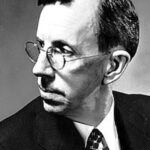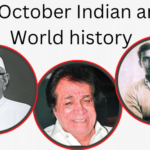Robert Curl (23 August 1933 – 3 July 2022) was an American chemist. He was awarded the Nobel Prize in Chemistry in 1996.
Early Life And Education
Robert Floyd Curl Jr. was born on August 23, 1933, in Alice, Texas, United States. He was the son of a Methodist minister, and his family frequently moved across southern and southwestern Texas due to his father’s missionary work. This nomadic lifestyle led to his father’s involvement in the establishment of the San Antonio Medical Center’s Methodist Hospital. Curl’s interest in chemistry was sparked at a young age when he received a chemistry set, which he famously used to accidentally damage his mother’s porcelain stove with nitric acid. He attended Thomas Jefferson High School in San Antonio, where he was given special projects in his senior year to further his single year of chemistry education. Curl went on to receive his Bachelor of Science from Rice Institute, now known as Rice University, in 1954, attracted by its academic reputation and the fact that it charged no tuition at the time. He completed his doctorate in chemistry at the University of California, Berkeley, in 1957, where he worked under the guidance of Kenneth Pitzer.
Career And Achievements
Robert Floyd Curl Jr. renowned for his groundbreaking discovery of fullerenes, a new class of carbon materials, which earned him the Nobel Prize in Chemistry in 1996 alongside his colleagues Richard Smalley and Harold Kroto. Curl’s illustrious career was rooted in his education at Rice Institute and the University of California, Berkeley, where he completed his PhD. His early work involved microwave spectroscopy and the study of free radicals, which set the stage for his later achievements. Over the years, Curl received numerous accolades, including the Clayton Prize in 1957, the Alexander von Humboldt Senior US Scientist Award in 1984, and the Golden Plate Award of the American Academy of Achievement in 1997. A member of the National Academy of Sciences since 1997, Curl’s contributions to chemistry have left an indelible mark on the scientific community and continue to inspire future generations of researchers.
Notable Events And Milestones
Robert Curl received his Bachelor of Science from Rice Institute and earned his doctorate from the University of California, Berkeley, where he worked under Kenneth Pitzer. Curl’s scientific career flourished at Rice University, where he made the groundbreaking discovery of fullerenes alongside Richard Smalley and Harold Kroto, earning them the Nobel Prize in Chemistry in 1996. This discovery of buckminsterfullerene, a spherical form of carbon, opened up a new branch of chemistry, with implications that resonated across various scientific disciplines. The fullerenes, often referred to as “buckyballs,” have since been found to occur naturally on Earth and in meteorites, suggesting their presence in the cosmos and potentially offering insights into the origins of life. The applications of fullerenes have been vast, ranging from the development of new materials to advancements in medical technology. Curl’s contributions extended beyond his Nobel-winning work. His research on quartz tuning forks and the development of trace-gas sensors aimed at improving environmental monitoring techniques. Furthermore, his work on high-powered lasers and fluorescent dyes has contributed to the advancement of DNA sequencing technology, showcasing his commitment to pushing the boundaries of scientific inquiry. Beyond his scientific achievements, Curl’s legacy is also defined by his role as a mentor and educator. During his tenure at Rice University, he influenced countless students and colleagues, shaping the next generation of scientists and contributing to the university’s culture and character. His dedication to education and research exemplifies the lasting impact an individual can have on society and culture. He Passed away on 3 July 2022.
Awards And Honors
- Nobel Prize in Chemistry (1996) for the discovery of fullerenes.
- Clayton Prize, Institute of Mechanical Engineers (1957).
- Alexander von Humboldt Senior US Scientist Award, University of Bonn, Germany (1984).
- Fellow of the National Academy of Sciences (1997).
- Golden Plate Award of the American Academy of Achievement (1997).
- Copley Medal (2004) for contributions to the sciences.
Additional Resources
Books:
- “Science of Fullerenes and Carbon Nanotubes”: This book is a comprehensive scientific reference on fullerenes.
- “The Most Beautiful Molecule: The Discovery of the Buckyball” by Hugh Aldersey-Williams: A book detailing the discovery of buckminsterfullerene.
- Additional books authored by Robert S. Curl can be found for those interested in his work on facility performance and energy reduction programs.
Documentaries:
- “The Nobel: The Greatest Gift” by Sigvard Strandh: A documentary exploring the origins and impact of the Nobel Prize, including the work of laureates like Robert Curl.
- “Inside the Nobel Prize” by Harry Kroto: Offers a unique perspective on the Nobel Prize in Chemistry, including insights into the work of Robert Curl.
Museums:
- While there are no specific museums dedicated to Robert Curl, his contributions to chemistry are likely featured in science and technology museums, especially those with exhibits on Nobel laureates or advancements in chemistry.
Observer Voice is the one stop site for National, International news, Editor’s Choice, Art/culture contents, Quotes and much more. We also cover historical contents. Historical contents includes World History, Indian History, and what happened today. The website also covers Entertainment across the India and World.










